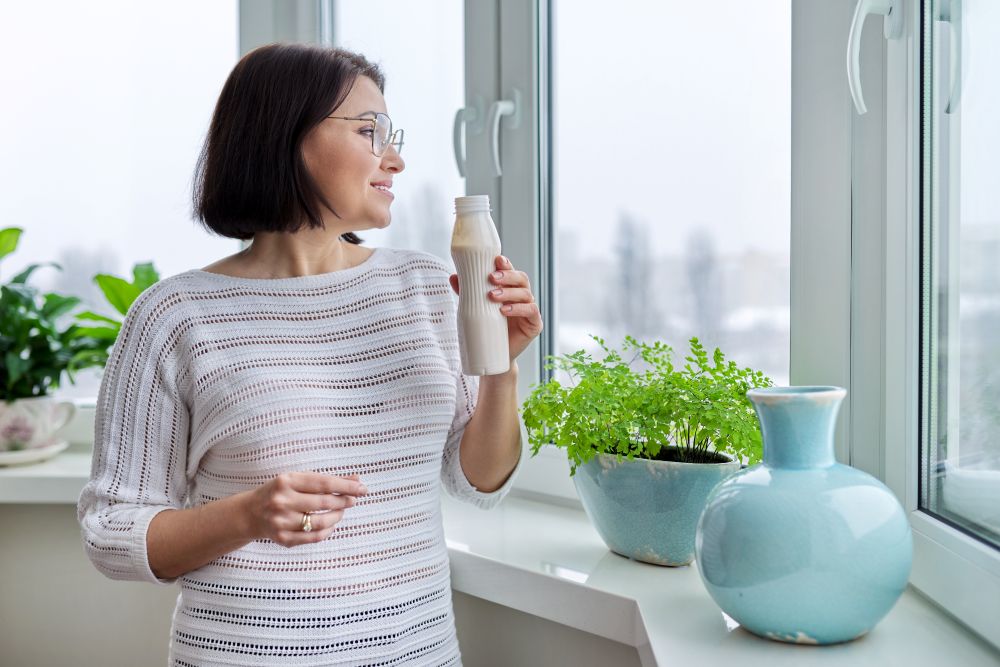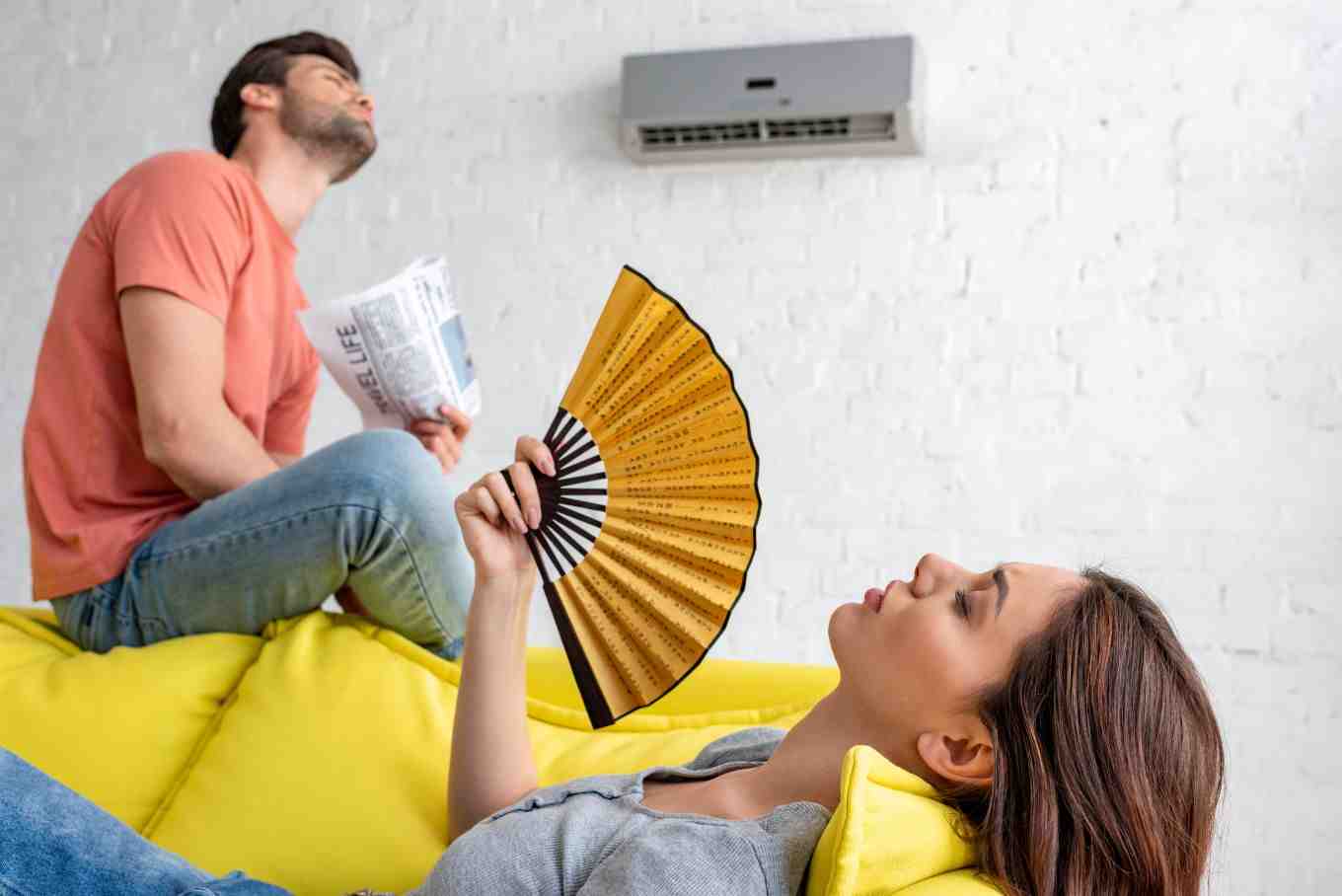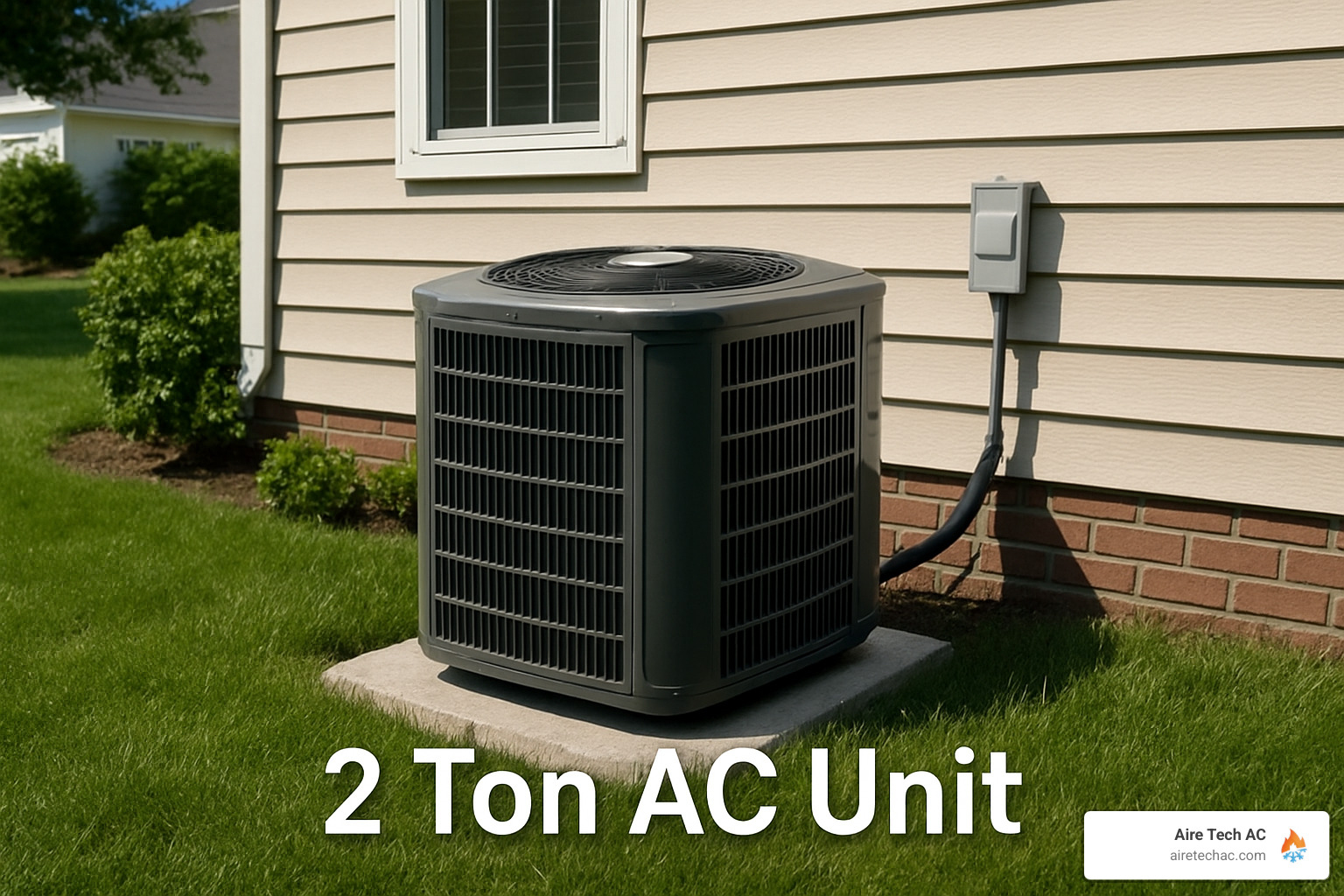Managing Indoor Air Quality During Peak Summer Months
Managing indoor air quality during peak summer months is crucial for maintaining a healthy, comfortable home environment when temperatures soar. As outdoor temperatures rise, so do the challenges to the air you breathe inside your home.
For those looking for quick solutions to improve indoor air quality this summer:
| Strategy | Implementation |
|---|---|
| Ventilation | Use exhaust fans, open windows during cooler hours, ensure clear air vents |
| Humidity Control | Maintain 30-50% humidity using dehumidifiers or properly sized AC |
| Filtration | Replace HVAC filters every 45-90 days, consider HEPA air purifiers |
| Source Control | Use low-VOC products, limit indoor cooking, groom pets regularly |
| Monitoring | Consider indoor air quality monitors to track pollution levels |
During summer, indoor air can become 2 to 5 times more polluted than outdoor air, according to the EPA. This happens because:
- Higher temperatures accelerate the release of volatile organic compounds (VOCs) from household materials
- Increased humidity creates perfect conditions for mold and dust mites
- Air conditioning systems recirculate air but may not adequately filter contaminants
- Many homes are sealed tightly to conserve energy, trapping pollutants inside
The good news is that with proper strategies, you can maintain healthy indoor air even during the hottest days. Whether you’re dealing with high humidity in the Southeast or dry heat in the Southwest, targeted approaches can dramatically improve your indoor environment.
Why Indoor Air Quality Suffers During Peak Summer Months
Those long, hot summer days might feel great at the beach, but they can wreak havoc on the air inside your home. Understanding exactly why your indoor environment takes a hit when temperatures soar is essential for effectively managing indoor air quality during peak summer months.
Heat-Accelerated Pollutant Release
Remember high school chemistry? Higher temperatures speed up chemical reactions. In your home, this means those volatile organic compounds (VOCs) hiding in your furniture, fresh paint, new carpeting, and even cleaning products evaporate much faster when it’s hot. Your beautiful new kitchen cabinets might be “off-gassing” at twice the rate during a heatwave compared to cooler months. Research confirms that VOC levels typically spike during summer, especially in newer homes or recently renovated spaces where these materials are more abundant.
Humidity Traps
Summer humidity isn’t just uncomfortable—it’s a perfect breeding ground for unwanted guests. When indoor humidity climbs above 60%, you’re essentially rolling out the welcome mat for dust mites, who absolutely love these conditions. Mold spores can establish new colonies in as little as 24-48 hours on damp surfaces, while bacteria multiply at alarming rates in warm, moist environments. That musty smell in your basement? It’s trying to tell you something!
Outdoor Pollution Invasion
Summer brings its own unique outdoor air quality challenges that don’t politely wait outside:
Ground-level ozone forms on those bright, sunny days when pollutants from cars and industry react with sunlight. This isn’t the good ozone that protects us in the upper atmosphere—this is the stuff that hurts our lungs.
Wildfire smoke has become an increasingly common summer visitor, even for homes hundreds of miles from the actual fires. Those tiny particles can find their way through the smallest cracks around doors and windows.
Pollen counts reach their peak during various summer months, making life miserable for allergy sufferers who thought staying indoors would provide relief.
Air Conditioning Recirculation
Your air conditioner is a summer hero, no doubt, but it comes with some air quality complications:
Without proper ventilation, your AC might just be recirculating the same stale air throughout your home. Those dust particles and pet dander are getting a free ride through every room!
Condensate pans and ductwork can become unexpected homes for mold and bacteria if not properly maintained. The cool, dark environment is perfect for these unwelcome boarders.
Temperature differences between rooms can create pockets of higher relative humidity, leading to localized moisture problems even while other areas feel perfectly comfortable.
The EPA’s Air Quality Index (AQI) frequently reaches concerning levels during summer months. Readings above 100 are considered unhealthy for sensitive groups, while anything over 300 is hazardous for everyone. Many regions regularly experience unhealthy AQI readings during summer heat waves, making proper indoor air management even more critical.
Key Summer Pollutants to Watch
Ozone
While the ozone layer high above protects us from harmful UV rays, ground-level ozone is a troublemaker. It forms when nitrogen oxides and VOCs interact with heat and sunlight. This irritating gas can trigger asthma attacks, cause coughing and throat irritation, reduce lung function even in healthy people, and worsen existing respiratory conditions.
Particulate Matter (PM2.5)
These microscopic particles (smaller than 2.5 micrometers) are particularly dangerous because they can bypass your body’s natural defenses, penetrating deep into your lungs and even entering your bloodstream. Summer brings plenty of PM2.5 from wildfire smoke, increased vehicle emissions, power plants working overtime to meet cooling demands, and dust from dry summer conditions.
Volatile Organic Compounds (VOCs)
VOCs are the invisible gases released from countless household products, and they love hot weather. They come from paints and paint strippers, cleaning supplies, pesticides, building materials, office equipment like printers, and even craft supplies. That “new car smell” or freshly painted room? Those are VOCs at work.
Bio-aerosols
Summer creates perfect conditions for biological particles to flourish:
Mold spores multiply rapidly in humid conditions, pollen counts soar during flowering seasons, bacteria thrive in warmth, and viruses can remain suspended in air. Even your furry friends contribute more to indoor air pollution during summer months, as pets typically shed more when temperatures rise.
The EPA provides extensive research on these short-term effects of poor indoor air quality, confirming that symptoms like headaches, fatigue, and respiratory irritation can appear quickly when summer air quality deteriorates.
Managing Indoor Air Quality During Peak Summer Months: Core Strategies
Managing indoor air quality during peak summer months isn’t just about comfort—it’s about creating a healthier home environment when outdoor conditions are at their most challenging. Let’s explore practical strategies that any homeowner can implement.
Best Ventilation Techniques for Managing Indoor Air Quality During Peak Summer Months
Think of ventilation as your home’s breathing system. During summer, the trick is bringing in fresh air without inviting heat, humidity, and outdoor pollutants to the party.
The early bird catches the fresh air! Open your windows between 4-7 AM or after 8 PM when outdoor air is typically cooler and cleaner. Create a refreshing cross-breeze by opening windows on opposite sides of your home. Window fans can dramatically improve this airflow—just position them to push hot, stale air outside.
For more controlled ventilation, your kitchen and bathroom exhaust fans do double-duty by removing both moisture and pollutants right at their source. If you’re looking for a more comprehensive solution, consider Energy Recovery Ventilators (ERVs) or Heat Recovery Ventilators (HRVs) that exchange indoor and outdoor air while minimizing energy loss. The Energy Saver guide provides excellent information on these whole-house options.
Don’t forget about your ceiling fans! Set them to rotate counterclockwise in summer to create a pleasant downdraft. This simple change allows you to set your thermostat a few degrees higher without sacrificing comfort. Just remember that fans cool people, not rooms—so turn them off in empty spaces to save energy.
“The sweet spot is combining mechanical ventilation for consistent air exchange with strategic natural ventilation when outdoor conditions are favorable,” our technicians often explain. “This balanced approach keeps your air fresh without sending your energy bills through the roof.”
Balancing Air-Conditioning Use, Energy Efficiency & IAQ
Your air conditioner is the unsung hero of summer comfort, but it needs proper care to maintain good indoor air quality.
Size matters when it comes to AC units. An oversized system will cool quickly but short-cycle, leaving your home feeling clammy because it doesn’t run long enough to dehumidify properly. A correctly sized system should run in longer cycles, effectively removing humidity while keeping you cool. Schedule professional maintenance before the summer heat hits to ensure clean coils (which prevents mold growth) and optimal performance.
Your choice of AC filter dramatically impacts your air quality. Standard filters (MERV 1-4) might protect your equipment, but they do little for your lungs. Better filtration (MERV 8-13) captures most airborne particles without restricting airflow in most systems. During wildfire season or if you suffer from allergies, consider temporarily upgrading to higher MERV ratings if your system can handle it.
For best results, replace filters every 90 days in most homes, or every 45 days if you have pets, allergies, or during peak summer pollution periods. You might be surprised by what’s hiding in your ductwork! Leaky ducts can pull in pollutants from attics, crawlspaces, and wall cavities. Consider having your ducts inspected for leaks, especially in older homes. If you notice visible mold, excessive dust, or have recently renovated, professional duct cleaning might be in order. You can learn more about how your HVAC system might be contributing to dust in your home in our article Is Your HVAC System to Blame for Excessive Dust in Your Home?
Smart thermostats aren’t just convenient—they can improve both comfort and air quality. Program slightly higher temperatures when nobody’s home, use “fan on” mode periodically to improve filtration even when cooling isn’t needed, and some models can even integrate with air quality monitors to increase filtration during pollution events.
Humidity Management: Staying in the Comfort Zone
If there’s one thing to master for managing indoor air quality during peak summer months, it’s humidity control. The sweet spot is 30-50% humidity, which balances comfort, energy efficiency, and keeps mold and dust mites at bay.
When indoor humidity climbs above 50%, it’s time to take action. Standalone dehumidifiers work wonders for problem areas like basements, while whole-house dehumidifiers can be integrated with your HVAC system for comprehensive control. Your air conditioner naturally removes humidity, but during extremely muggy periods, it might need some help.
Being proactive about moisture sources can prevent humidity problems before they start. Fix leaky plumbing promptly, ensure proper drainage around your foundation, always use exhaust fans during showers and cooking, and be mindful not to overwater indoor plants. If spills happen, dry wet areas immediately to prevent mold growth.
As the saying goes, you can’t manage what you don’t measure. Invest in a digital hygrometer (humidity monitor) for each level of your home. Some smart thermostats include humidity sensors, and more advanced IAQ monitors track humidity alongside other pollutants.
“Here in Southern California, we often see homes with humidity levels that swing dramatically between day and night,” our technicians have observed. “These fluctuations can stress materials in your home and create conditions where mold grows during humid periods and then releases spores when it dries out—a double whammy for your indoor air quality.”
Air Filtration & Purification Upgrades
When summer brings wildfire smoke, high pollen counts, or smog, good filtration becomes your indoor air’s best friend.
Different technologies target different pollutants, so understanding your options is important. HEPA filters excel at capturing particles as small as 0.3 microns including dust, pollen, and pet dander, but don’t address gases or VOCs. Activated carbon filters are champions at absorbing odors, smoke, and VOCs, but offer limited particle removal. UV-C light technology kills bacteria and viruses but requires adequate exposure time to be effective. Newer technologies like PECO/PCO systems can break down VOCs and biological contaminants at the molecular level. Electrostatic purifiers charge particles for collection but may produce ozone as a byproduct.
When choosing between portable and whole-home solutions, consider your specific needs. Portable air purifiers work beautifully for single rooms or apartments, while whole-home solutions integrate with your HVAC system for comprehensive coverage. Many homes benefit from a hybrid approach with whole-home filtration plus targeted portable units in bedrooms or high-use areas. Learn more about how air purifiers can help in our article How Air Purifiers Help Protect Your Indoor Air Quality.
On a budget or facing a sudden air quality emergency? Try this DIY air purifier: attach a 20×20 MERV 13 filter to the front of a box fan, ensuring the filter is sealed against the fan with no air gaps. Replace the filter when visibly dirty or after heavy use.
If you live in a wildfire-prone region, preparation is key. Keep extra high-efficiency filters on hand, consider creating a designated “clean room” with portable air purifiers, seal windows and doors with weatherstripping, and run your AC on recirculate mode during smoke events.
Source Control & Routine Cleaning
Reducing pollutants at their source is often more effective and economical than trying to filter them out later.
Choose products with lower chemical emissions, especially during summer when heat accelerates off-gassing. Look for low or zero-VOC paints and finishes, natural cleaning products, solid wood furniture rather than pressed wood products, and natural fiber carpets and rugs.
Summer calls for some adjustments to your cleaning routine. Dust with microfiber cloths that capture particles rather than sending them airborne, vacuum with HEPA-filtered vacuums weekly (focusing on high-traffic areas), wash bedding in hot water weekly to reduce dust mites, and groom pets outdoors regularly during shedding season. Our article on The Major Consequences of Not Changing Your Air Filter explains why regular maintenance is so important.
Some summer activities can generate significant indoor pollutants. Move hobbies involving solvents, glues, or paints outdoors or to well-ventilated areas. Consider grilling outdoors rather than using gas stoves or indoor grills, which can release particulates and nitrogen dioxide. Allow new furniture or carpeting to off-gas in garages or well-ventilated spaces before bringing them into living areas.
Real-Time Monitoring & Alerts
Modern technology has made it easier than ever to track your indoor air quality and take action before problems develop.
Several types of monitors are available to fit different needs and budgets. Basic monitors track temperature, humidity, and sometimes CO2. Mid-range monitors add particulate matter (PM2.5) detection. Advanced monitors also detect VOCs, formaldehyde, and other specific pollutants.
Understanding what your monitor is telling you is just as important as having one. CO2 levels above 1000 ppm indicate inadequate ventilation. PM2.5 readings above 12 μg/m³ exceed EPA’s annual standard. VOC readings vary by monitor type, but sustained high readings warrant investigation. Many monitors can integrate with your smart home to trigger HVAC systems to increase filtration when pollution is detected, send smartphone alerts when air quality deteriorates, activate air purifiers automatically, and track historical data to identify patterns and problems.
“Real-time monitoring has changed the game for indoor air quality,” our team at Aire Tech AC often tells customers. “Instead of wondering what’s in your air, you can see exactly what’s happening and take immediate action. It’s like having a weather forecast for inside your home!”
By implementing these core strategies, you’ll be well on your way to managing indoor air quality during peak summer months effectively, creating a healthier, more comfortable home environment even when outdoor conditions are challenging.
Frequently Asked Questions about Summer Indoor Air Quality
Why does my indoor air feel stuffy even with the AC on?
That stuffy feeling despite your AC running full blast is a common summer frustration. There’s usually a simple explanation behind it, and often an equally simple fix.
Most often, it comes down to inadequate ventilation. Your air conditioner excels at cooling and recirculating air, but it’s not designed to bring in fresh outdoor air. During summer, we tend to keep windows closed, creating a sealed environment where the same air gets recycled over and over. Try opening windows during cooler morning or evening hours, or consider an energy recovery ventilator for a more permanent solution.
Dirty filters are another common culprit. When was the last time you checked yours? Clogged filters restrict airflow dramatically, making your system work harder while cleaning less air. That layer of dust isn’t just unsightly—it’s actively preventing your AC from doing its job properly.
Sometimes the issue is actually an oversized AC unit. Counterintuitively, bigger isn’t better when it comes to air conditioning. A properly sized system should run for longer cycles, which gives it time to dehumidify the air. An oversized unit cools quickly but short-cycles, leaving you with cool but humid, stuffy-feeling air.
Don’t overlook the basics, either. Blocked vents or returns from furniture, drapes, or rugs can seriously impair airflow throughout your home. And finally, summer often brings increased indoor pollutant sources—from cooking to cleaning products to hobbies—that can overwhelm your system’s ability to keep air fresh.
How often should I replace HVAC filters during peak summer?
Filter replacement isn’t a one-size-fits-all recommendation, especially during the demanding summer months. While the standard advice is every 90 days for average homes, summer often calls for more frequent changes.
If you have pets, aim for every 45-60 days during summer, as shedding tends to increase in warmer weather. For allergy sufferers, I recommend changing filters every 30-45 days to help manage symptoms during high pollen seasons.
During wildfire season—which unfortunately has become more common in Southern California—you might need to replace filters as frequently as every 2-3 weeks if you notice visible discoloration. That gray filter is telling you something!
The best advice I can give is to trust your eyes—if a filter looks dirty before the recommended replacement time, change it early. And here’s a money-saving tip: a moderately priced filter changed regularly will usually outperform an expensive filter left in place too long.
Are indoor plants a reliable way to clean summer air?
Those beautiful houseplants may brighten your mood, but they’re probably not doing much for your air quality. While NASA studies from the 1980s created excitement about plants as natural air purifiers, more recent research paints a more realistic picture.
The truth is, you’d need an indoor jungle—dozens or even hundreds of plants—to make a measurable difference in your home’s air quality. A few potted friends on the windowsill simply can’t process enough air to impact a typical room.
Plants can actually increase humidity levels, which might not be ideal during muggy summer months. Overwatered plants can potentially contribute to mold growth, especially in already-humid environments. Some plants even emit their own VOCs (though these are generally harmless), and soil can harbor mold spores.

That said, don’t rush to get rid of your greenery! Plants provide wonderful psychological benefits that shouldn’t be discounted. They connect us to nature, improve our mood, and can absolutely improve our perception of air quality. If you enjoy houseplants, by all means, keep them—just don’t rely on them as your primary air purification strategy.
Instead, focus your efforts on the proven trio of source control (reducing pollutants), ventilation (bringing in fresh air), and filtration (removing particles). These approaches, while less decorative than a lovely fern, will do far more to keep your summer air clean and fresh.
At Aire Tech AC, we’ve seen homes with beautiful plant collections but poor air quality, and homes with no plants but excellent air quality. The difference always comes down to proper HVAC maintenance and air quality management—not the plant count!
Call Aire Tech Today!
At Aire Tech AC, we see ourselves as partners in your family’s health journey. Our experienced technicians don’t just fix equipment—they solve problems, addressing your home’s specific air quality challenges with solutions custom to your needs and budget. From simple filter upgrades to comprehensive purification systems, we’re here to help you breathe easier.
Don’t wait until someone in your family shows symptoms of poor air quality. Being proactive about your indoor environment is one of the most important steps you can take toward a healthier life, especially during challenging summer conditions.

For more information about our indoor air quality services or to schedule a consultation, visit our website or contact our team directly. Your family’s health is our priority, and we’re here to help you breathe easier this summer.







